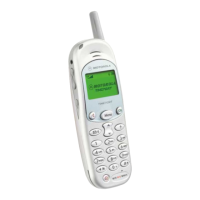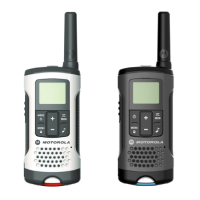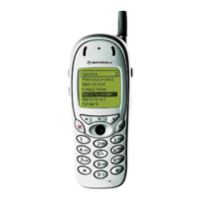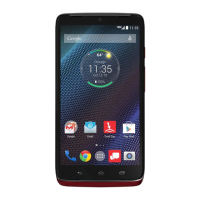20 © 2002 Motorola, Inc.
Theory of Operation
T720
RFT3100: Baseband to RF transmit pro-
cessor, it features the following:
• Full upconversion form Analog
Baseband to RF TX
• Integrated I/Q Modulator, IF VCO/
PLL, SSB Upconverter, VGA, and
Driver amplifiers
• Designed for dual mode cellular
(CDMA/AMPS), single band PCS,
or dualband PCS (PCSCDMA/
AMPS) applications
• Eliminates Image-reject filter
between upconverter and Driver
amplifier
• Includes two Cellular and two PCS
Driver Amplifier outputs, eliminating
external switches
• MSM5100-controlled operation via
Serial Bus Interface (SBI)
• Tx Power Control through 85 dB
dynamic range VGA
VCO/PLL MODULE
This is a dual band replacing dual syn-
thesizer, loop filter, and dual band VCO.
It features the following:
• Dual band VCO + Dual PLL module
• RF VCO frequency is 2105.28 to
2173.9 Mhz, output power is about
–3 to 0 dBM
• 367.2 Mhz is Rx IF VCO frequency
• 1391.82 Mhz is GPS VCO frequency
• MSM5100-controlled operation via
Serial Bus Interface (SBI)
REFERENCE OSCILLATOR
Provide reference frequency for the phone,
Oscillates at 19.2 Mhz
POWER AMPLIFIERS (PA)
Two PA's module one for Cel-
lular & 800 CDMA Band and PCS Band PA
No PA biasing
THEORY OF OPERATION
RECEIVER SECTION
The receiver section occupies a frequency
band of 869 Mhz to 894 Mhz in cellular band
and a frequency band of 1930Mhz to
1990Mhz in PCS band. Rf signal received
from the antenna is applied to diplexer and
then through duplexer to RFR3300. Inside
the RFR3300 the first step is it goes through
LNA, where it is amplified and then applied
to BPF. Finally only necessary signals are
sent to the down converter – the first mixer.
At this time the down converter (first mixer)
mixes the RF signal with Local Oscillator
signal generated by the Dual band VCO/PLL
module. The IF 183.6 Mhz in frequency
(same for both the Cellular and PCS band) is
derived from the mixing operation is applied
to the IF band pass filter and only necessary
signals are selected. The IF signal now enters
the IFR IC.
First it is induced to AGC Amp inside the
IFR3000/IFR3300 which is adjusted to PDM
(pulse density modulation) signal by
received signal strength level (RSSI). This
AGC amplifier is adjusted to the size match-
ing to the input sensitivity of IFR(analog
baseband). The AGC dynamic range is
approximately 90 dB.
The output of AGC is down converted at 2
nd
mixer in order to obtain a baseband signal
necessary for demodulation. For this purpose
the 2
nd
Local oscillator, VCO of 367.2 Mhz
signal is produced which is divided in fre-
quency by half to get 183.6Mhz second LO.
The Second IF signal is divided into I and Q
signals within the baseband(Zero-IF) and
then filtered through low pass filter and then
get A/D conversion. This is then output from

